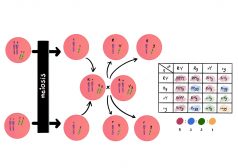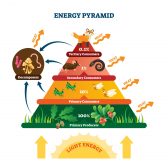Definition
noun, plural: halophiles
An organism that thrives in an environment of high salinity
Supplement
A halophile is an organism that lives in an environment that has a high salinity such as ocean and solid salt crystals. Halophiles are found thriving in habitats with a high concentration of salt, such as in the Great Salt Lake in Utah and Owens Lake in California.
Halophiles may be described as slightly, moderately, or extremely halophilic based on the extent of their tolerance to salinity. Slight halophiles are those that thrive in 1.7 to 4.8% salt content. Moderate halophiles are those that prefer 4.7 to 20% salt content. Extreme halophiles prefer 20 to 30% salt content.1 The latter may also be referred to as extreme halophiles or hyperhalophiles.
Halobacteria (now Haloarchaea) are archaea that prefer an environment that is saturated with salt. Salinibacter ruber is another extremely halophilic organism. It is a red bacterium found in saltern crystallizer ponds in Alicante and Mallorca, Spain. It optimally grows in an environment with a salinity ranging from 20 to 30%. It cannot live in an environment below 15% salt concentration. As for eukaryotes, the fungus Wallemia ichthyophaga and the green alga Dunaliella salina are examples of halophiles. Brine shrimp and the larvae o brine flies are also eukaryotic halophiles.
Halophiles are able to live in saline environment because they can accumulate internal organic compatible solutes that can balance the osmotic stress of their environment. Others are capable of producing acidic proteins that increase solvation and thereby improve function in high salinity.2
Word origin: halo- (salt) + phile (love)
Also called:
- halophil
See also:
Related term(s):
- hyperhalophile
Mentioned in:
Reference(s):
1 Ollivier, B., Caumette, P., Garcia, J-L. and Mah, R. (1994) Anaerobic bacteria from hypersaline environments. Microbiological Reviews 58(1):27-38.
2 DasSarma, S., and DasSarma, P. (Mar 2012) Halophiles. In: eLS. John Wiley & Sons Ltd, Chichester. Retrieved from ://www.els.net/WileyCDA/ElsArticle/refId-a0000394.html.







